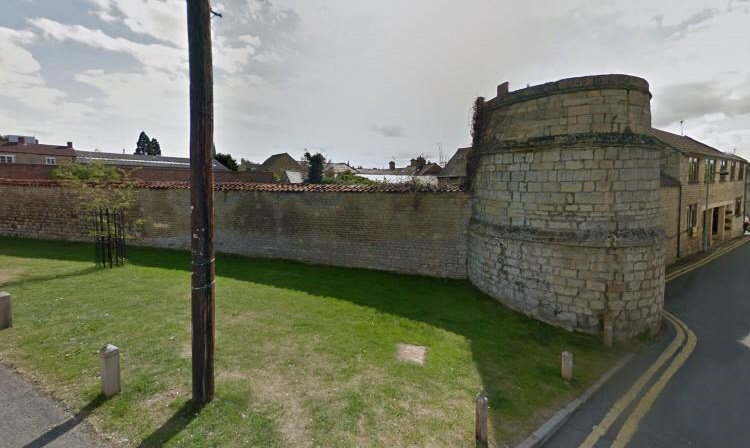

The Bastion
In the medieval period Stamford was a walled town as befitted its strategic position on the Great North Road and the River Welland. The walls, dating principally from the 13th century, are clearly to be seen in John Speed’s map of c1600 together with the main gates. Originally there were seven gates into the city, St Peter’s Gate, St Clement’s or Scot Gate, New Gate, St Paul’s Gate, St George’s Gate, Water Gate and Bridge Gate. These gates were demolished in the late eighteenth and early nineteenth century to accommodate the increasing amount of traffic entering and leaving the town.
A town clerk of the mid seventeenth century, one Richard Butcher, notes the existence of five towers along the walls, Beesfort, Holme, Carpe and White towers and North Bulwarke. A.E.G. Dixon suggests that there were 11 towers in the thirteenth century but only one of these remains, the Bastion. Close by the old St Peter’s Gate, the Bastion is the best surviving fragment of the thirteenth century walls. Few other features can easily be identified but North Street, West Street, Elm Street, parts of Brazenose Lane and Wharf Road follow the lines of the ancient walls.
The Royal Commission Survey of Stamford notes that “The Bastion is of two stages with weathered external set-backs, and parapet which is pierced by a single loop of uncertain antiquity.” Much repair is evident and the tower was originally open at the back while the flanking walls are post medieval.